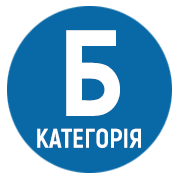TECHNOLOGIES OF TEACHING TO IDENTIFY FAKES IN THE “INFOMEDIA LITERACY” COURSE
DOI:
https://doi.org/10.25128/2415-3605.22.1.14Keywords:
media education, media literacy, learning technologies, fake, fake identification, competencies, learning outcomesAbstract
Today, in the conditions of increased information pressure, the need for critical perception of media messages has become acute. Media literacy skills should become the basic competencies of every person. In this context, the significance of the course “Information Media Literacy” is growing as its aim is to develop in students ability to thoughtfully perceive media materials and critically interpret them, including identification of fakes and manipulations. The Russian-Ukrainian war provoked a quantitative increase in the deliberate spread of misinformation, which includes fakes. Their spread is extremely dangerous. False messages can be used to manipulate peopleʼs minds and cause interpersonal and global conflicts. The purpose of the publication is to substantiate the need and provide technologies for the development of skills to identify fake messages while studying the course “Information Media Literacy”. To achieve this goal, the following methods have been used: descriptive (classification, document analysis), media linguistic (rhetorical, cognitive, discursive analysis of media texts), content monitoring, content analysis. The research findings revealed that awareness of the need to include media literacy in the educational process dates back to the 60s of the twentieth century, and its main objectives were formulated by UNESCO in 2007. In 2010, the Concept of Implementing Media Education in the educational process was adopted in Ukraine. The discipline “Information Media Literacy” became the basis for its implementation in TNPU, which involves the development of studentsʼ relevant media and cultural competencies. The formation of critical immunity of the media audience is based on the algorithm of identification of fake information. The study of fake markers was the subject of practical educational technologies tested in the educational process of TNPU. The proposed tasks are designed to develop skills for recognizing signs of fakeness in the information space. Each task provides methodical tools: the purpose, program competencies and learning outcomes, the order of performing and options for justification of answers. In particular, the tasks involved developing skills to work with sources of information; ask questions, justify oneʼs own point of view; evaluate and interpret events; identify fakes, propaganda and manipulation tools in texts and headlines. Tasks are aimed at achieving the following learning outcomes by students: the ability to demonstrate the appropriate level of critical thinking and understanding of the level of information impact on the individual; ability to interpret current phenomena (fake news, information attacks, manipulation, etc.) of the information space for a wide audience, to increase the level of its media literacy.
References
Інфомедійна грамотність. Робоча програма навчальної дисципліни для студентів першого (бакалаврського) / другого (магістерського) рівня вищої освіти галузі знань 01 Освіта / Педагогіка спеціальності 014 Середня освіта (за предметними спеціалізаціями). URL: https://elr.tnpu.edu.ua/enrol/index.php?id=3593
Концепція впровадження медіаосвіти в Україні. Інститут соціальної та політичної психології НАПН України. 2010. URL: https://ms.detector.media/ mediaosvita/post/11048/2010-09-29-kontseptsiya-vprovadzhennya-mediaosvity-v-ukraini/
Концепція впровадження медіаосвіти в Україні (нова редакція). 2016. URL: https://ms.detector.media/mediaosvita/post/16501/2016-04-27-kontseptsiya-vprovadzhennyamediaosvity-v-ukraini-nova-redaktsiya/
Кушнір О. В., Решетуха Т. В. Ідентифікація фейків в контексті формування критичного мислення майбутніх педагогів. Наукові записки Тернопільського національного педагогічного університету імені Володимира Гнатюка. Серія: педагогіка. 2021. № 1. С. 138–145.
Медіаосвіта та медіаграмотність: підручник / ред.-упор. В. Ф. Іванов, О. В. Волошенюк; за наук. ред. В. В. Різуна. Київ: Центр вільної преси, 2012. 352 с.
Психологія діяльності та навчальний менеджмент: навчальний посібник / М. В. Артюшина, Л. М. Журавська, Л. А. Колесніченко та ін.; за заг. ред. М. В. Артюшиної. Київ: КНЕУ, 2008. 336 с.
Як визначити та зловити фейк? URL: https://imi.org.ua/advices/yak-vyznachyty-ta-zlovyty-fejki2388
Media Education. Paris: UNESCO, 1984. 211 p.
European Parliament resolution of 16 December 2008 on media literacy in a digital world (2008/2129(INI)). URL: http://www.europarl.europa.eu/sides/getDoc.do?pubRef=-//EP//TEXT+TA+P6-TA-2008-0598+0+DOC+XML+V0//EN






